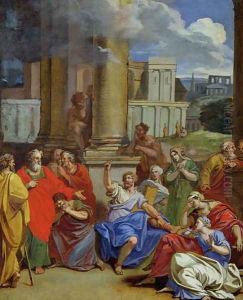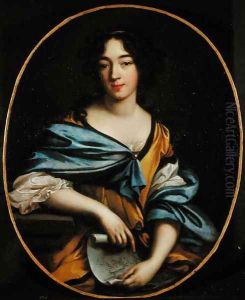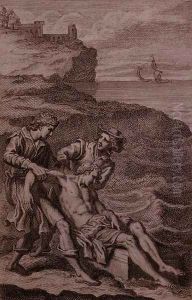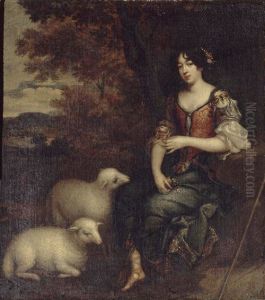Elisabeth Sophie Cheron Paintings
Elisabeth Sophie Chéron was an acclaimed French artist born on October 3, 1648, in Paris, France. She was a multifaceted figure in the arts, known for her skills as a painter, poet, and musician. Chéron was the daughter of an artist, which afforded her the opportunity to train in the arts from a young age. Her father, Louis Chéron, was a successful painter and engraver who recognized her talents early on and provided her with a thorough artistic education. Her upbringing in a creative environment significantly shaped her artistic career, and she quickly became known for her work in miniatures and portraits.
Chéron was a woman of remarkable achievements during a time when the artistic field was predominantly male-dominated. She became a member of the Académie Royale de Peinture et de Sculpture in 1672, an impressive accomplishment as one of the few female members in the institution's history. Her admittance was based on the merits of a painting of the Roman hero Regulus, which highlighted her mastery in history painting. Throughout her life, she continued to receive commissions from notable figures and institutions, including producing works for the French royal family.
In addition to her painting, Chéron was also known for her talents in poetry and music. She wrote many religious poems and was skilled in playing the harpsichord. Chéron was fluent in Italian and translated various works, including the Psalms, into French. Her intellectual pursuits and artistic talents made her a respected figure within the artistic and literary circles of her time.
Elisabeth Sophie Chéron's contributions to the arts were celebrated during her lifetime, and she continued to work until her death on September 3, 1711. Her legacy persisted as she paved the way for future generations of female artists. Her works are a testament to her skill and versatility and remain of interest to art historians and collectors. Chéron's life and work are significant in the context of the history of women in the arts, illustrating the capabilities and success that could be achieved despite the gender constraints of her era.




